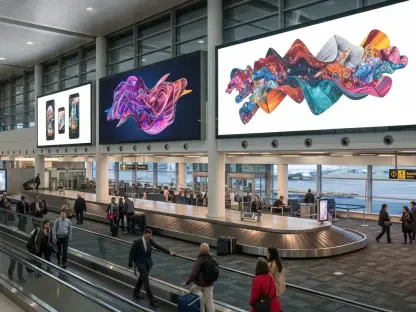Once a novelty, visual search in affiliate marketing has swiftly become an influential force transforming how consumers find and purchase products. With a staggering 600 million monthly visual searches, platforms like Pinterest demonstrate the growing consumer preference for visual discovery over text-based methods. The appeal lies in the ability to connect inspiration with action, driving conversions while integrating seamlessly into users’ purchasing routines. In affiliate marketing, visual search not only enhances consumer engagement but offers unprecedented opportunities for brands to reach high-intent users, setting the stage for a new era of digital marketing strategies. This article delves into recent growth trends, practical applications, expert insights, and future prospects within the realm of visual search in affiliate marketing.
Current Trends and Adoption of Visual Search in Affiliate Marketing
Data and Growth Trends
Visual search in affiliate marketing is experiencing unprecedented growth, driven by technological advancements and consumer demand for more interactive experiences. According to recent reports, platforms incorporating visual search capabilities have observed notable increases in user engagement and affiliate sales. The intersection of AI advancements and affiliate strategies has led to a rapid adoption of these tools, as marketers recognize the potential for enhanced search quality and conversion rates. Data show a significant portion of consumers now favor visual search tools, indicating a widespread shift in behavior and expectations.
Real-World Applications
Prominent examples of visual search in affiliate marketing can be seen in companies like Pinterest, which have effectively integrated this technology to boost user involvement and sales. With features like the Lens tool, Pinterest allows users to perform visual searches that identify real-world objects, linking them to affiliated products seamlessly. This innovation not only expands consumer engagement but also provides affiliate marketers with a powerful tool to drive traffic and conversions. Detailed case studies reveal the enormous potential for visual search to redefine affiliate marketing strategies, creating interactive and personalized consumer experiences that extend beyond traditional methods.
Expert Insights on Visual Search
In the view of industry experts, visual search presents both opportunities and challenges in affiliate marketing. While the potential for increased engagement and conversion is substantial, implementing this technology requires overcoming barriers such as integrating AI tools and ensuring seamless user experiences. Experts suggest that a focused investment in AI and user interface design is crucial to successfully leveraging visual search. Thought leaders underscore the importance of aligning visual search capabilities with consumers’ evolving preferences, advising marketers to prioritize ease of use and personalization to maximize effectiveness.
Future Outlook for Visual Search in Affiliate Marketing
The road ahead for visual search in affiliate marketing looks promising, with ongoing advancements in AI and more sophisticated visual recognition technologies anticipated to further enhance its capabilities. As technology evolves, affiliate marketers are likely to encounter both new opportunities and obstacles. The ability to seamlessly connect consumers with products in real-time through visual searches is expected to usher in a new wave of affiliate strategies, potentially revolutionizing how brands engage with customers. Both industries and consumers stand to benefit from these innovations, though marketers will need to navigate challenges such as ensuring data privacy and maintaining authentic user interactions.
Conclusion and Call to Action
The transformative potential of visual search in affiliate marketing became clear as it shifted from a novel feature to a staple of digital strategies. This trend reshaped consumer behavior, setting higher expectations for seamless shopping experiences. As visual search technologies matured, brands successfully integrated them into marketing strategies, driving substantial growth in engagement and sales. Looking forward, marketers should capitalize on these learnings, adopting visual search as a central component of their plans. By doing so, they can innovate, meet consumer expectations, and position themselves for continued success in a competitive digital marketplace.









